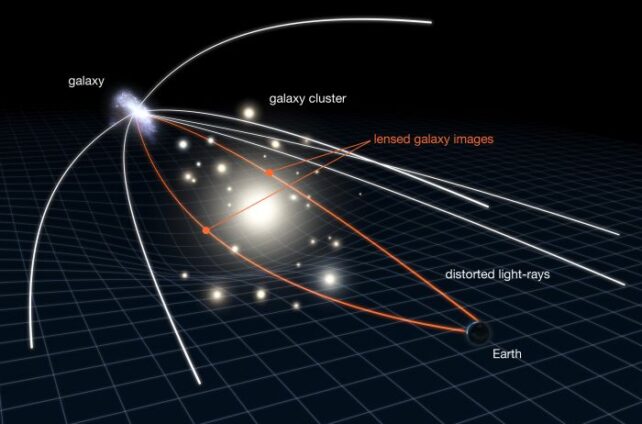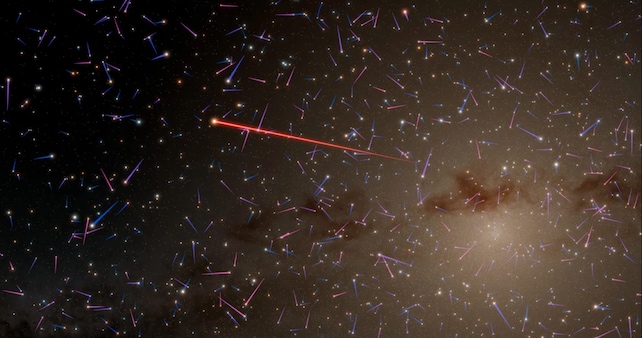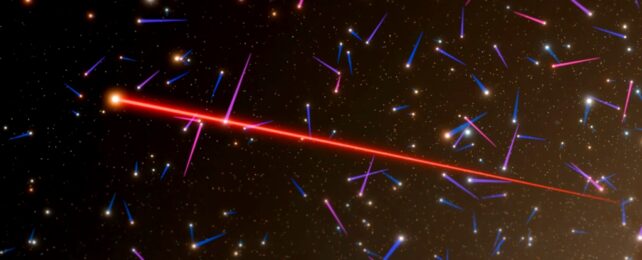In the Milky Way's central bulge, about 24,000 light-years from Earth, a peculiar pair of objects appears to be hurtling through space at breakneck speed.
Evidence suggests these objects are a high-velocity star and its accompanying exoplanet, a new study reports. If that's confirmed, it would set a new record as the fastest-moving exoplanet system known to science.
Stars are on the move throughout the Milky Way, typically at a few hundred thousand miles per hour. Our Solar System's average velocity through the galaxy's Orion Arm is 450,000 miles per hour, or 200 kilometers per second.
These two objects are careening twice as fast, at a speed of at least 1.2 million miles per hour (540 kilometers per second).
"We think this is a so-called super-Neptune world orbiting a low-mass star at a distance that would lie between the orbits of Venus and Earth if it were in our solar system," says astronomer Sean Terry from the University of Maryland and NASA's Goddard Space Flight Center.
"If so, it will be the first planet ever found orbiting a hypervelocity star."
The two objects were initially found in 2011, as researchers hunted exoplanets in data from Microlensing Observations in Astrophysics (MOA), a project based at the University of Canterbury Mount John Observatory in New Zealand.
Gravitational microlensing is a phenomenon that occurs when a massive celestial object is near the line of sight that runs between a distant observer on one side and a distant star on the other.
Since mass warps spacetime, the star's light curves as it passes through the object's distorted spacetime on its way to the observer. If all three points align closely enough, the bent spacetime around the middle object acts as a lens for the observer, amplifying starlight.

Researchers studying MOA data in 2011 determined the objects' relative mass – one is 2,300 times more massive than the other – but the actual mass of both remained unclear.
"Determining the mass ratio is easy," says astronomer David Bennett from the University of Maryland and NASA Goddard, who worked on the 2011 and 2025 studies. "It's much more difficult to calculate their actual masses."
Finding an object's actual mass requires knowing its distance, in a similar way to how moving a magnifying glass closer and farther distorts the apparent size of objects without altering the differences between them.
Bennett and his colleagues in 2011 floated two scenarios for the pair of objects: Either it's a star and a planet, with the star slightly less massive than our sun and the planet 29 times more massive than Earth, or it's a less distant rogue super- Jupiter towing a moon smaller than Earth.

For the new study, researchers sought to find out what these two are and what they're up to more than a decade later – using data from the Keck Observatory in Hawaii and the European Space Agency's Gaia satellite.
They settled on a star system roughly 24,000 light-years away from Earth as the likeliest candidate. It's in the Milky Way's bright, densely populated central bulge of stars, the galactic downtown to our distant suburban perch.
Based on its distance from the 2011 signal, the team calculated how fast the star is moving, finding its speed is more than twice that of our sun.
That only accounts for its two-dimensional motion as seen from Earth, though. It could also be moving toward or away from us, which is harder to detect from our vantage, yet would mean it's moving even faster.
That suggests this star might be fast enough to surpass the Milky Way's escape velocity, thought to be around 550 to 600 kilometers per second.
If so, then it's headed for intergalactic space – although not for millions of years, since the Milky Way is huge and it's still pretty much right in the middle.
While this solar system fits the profile of the 2011 objects, only time will tell.
"To be certain the newly identified star is part of the system that caused the 2011 signal, we'd like to look again in another year and see if it moves the right amount and in the right direction," Bennett says.
If the star just remains stationary, then we'll know it is not contributing to the signal-causing system.
"That would mean the rogue planet and exomoon model is favored," explains astrophysicist Aparna Bhattacharya from the University of Maryland and NASA Goddard.
The study was published in The Astronomical Journal.
